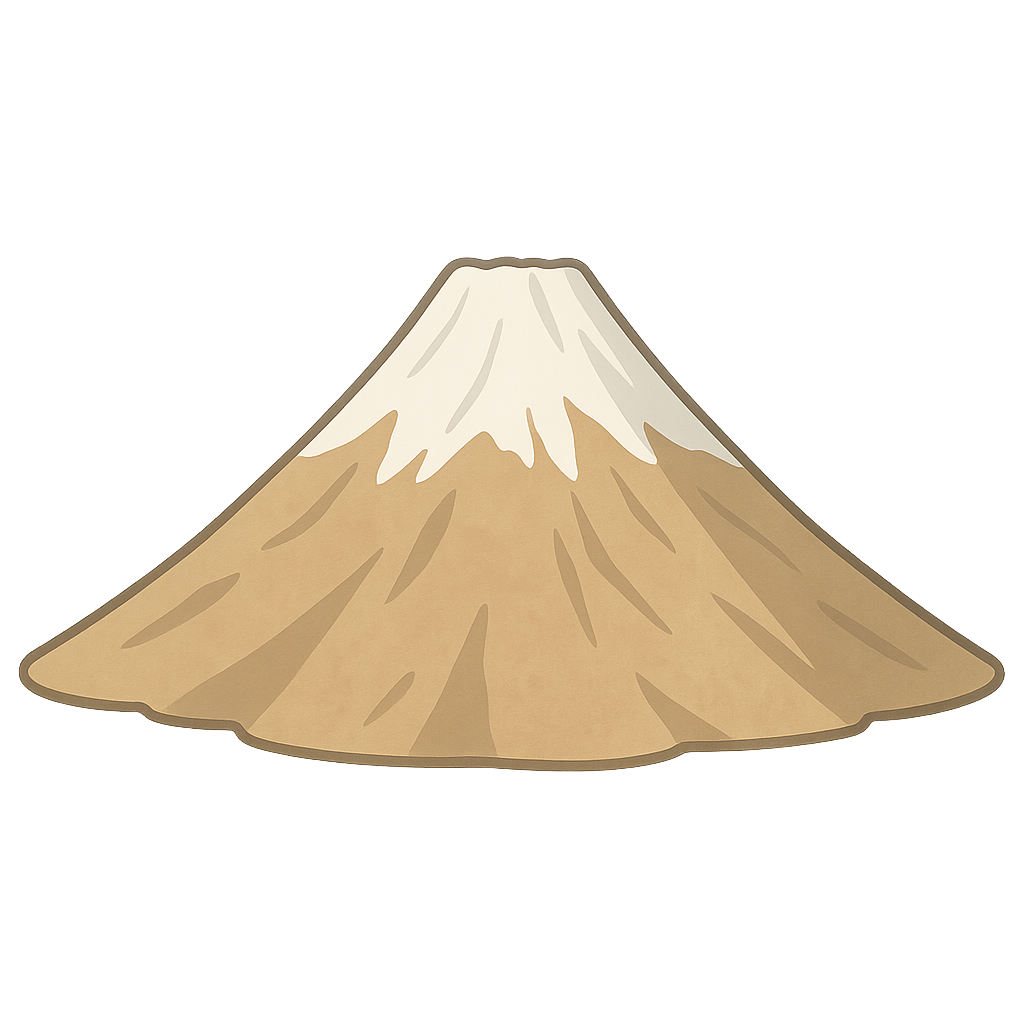The Story of Mount Fuji
From my great height, I watch the world wake up. The sun peeks over the horizon, painting the clouds pink and orange as they drift past my shoulders. Far below, tiny cities begin to glitter with lights, and the five lakes scattered around my feet shimmer like jewels. For thousands of years, I have been a quiet, sleeping giant, wearing a cap of bright white snow for most of the year. I am a landmark, a perfect cone-shaped peak that people can see from very far away in a beautiful land of islands. Many people have looked up at me with wonder, feeling a sense of peace just by seeing my familiar shape against the sky. I am Mount Fuji, but in Japan, my friends call me Fuji-san.
My story did not begin with a gentle whisper, but with a mighty roar. I was born from the fiery heart of the Earth. I am a volcano, you see, and I was built over many thousands of years. Long ago, deep underground, melted rock called magma pushed its way to the surface. It burst out in huge explosions of fire, smoke, and ash. This happened again and again. Each time, hot, flowing lava would cool and harden, forming a new layer on top of the last. Layer upon layer, eruption after eruption, I grew taller and stronger, reaching for the sky. My last big eruption was a very long time ago, in the year 1707. Since then, I have been resting. But the people who first saw me knew my power. They looked at my towering height and the smoke that once curled from my peak and saw me as something sacred and mighty, a bridge between the earth and the heavens.
Because people saw me as a powerful and holy place, they believed that special spirits, called ‘kami,’ lived on my rocky slopes. This made me a very important mountain in the Shinto religion of Japan. For centuries, climbing my steep paths was more than just a hike; it was a special journey, a pilgrimage. The very first person said to have reached my summit was a monk named En no Gyōja, all the way back around the year 663. He was seeking peace and a connection to the world of spirits. After him, many others followed. Brave samurai warriors would climb me to train their bodies and minds, and devoted pilgrims in white robes would make the long journey, chanting prayers as they walked. They believed that by reaching my peak, they were cleansing their spirits and getting closer to heaven. Each step was a challenge, but the view from the top made it all worthwhile.
My graceful shape has not only called to pilgrims, but also to artists. For hundreds of years, painters and poets have tried to capture my beauty. One artist, whose name became famous all over the world, was Katsushika Hokusai. He loved me so much that between 1830 and 1832, he created a whole series of art called 'Thirty-six Views of Mount Fuji'. In each picture, he showed me in a different mood. Sometimes I was calm and reddish in the morning sun, other times I was a quiet witness to a storm. You might even know his most famous picture, 'The Great Wave off Kanagawa'. If you look closely, you can see me in the background, small but steady, as a giant wave crashes over some fishing boats. Hokusai’s beautiful woodblock prints traveled across the sea, and soon, people everywhere recognized my perfect cone.
Today, my fiery beginnings are a distant memory. I am now a symbol of Japan's beauty and strength, and I am protected as a UNESCO World Heritage site so that people from all over the world can enjoy me. Every summer, my trails are filled with the cheerful voices of thousands of climbers, young and old, who hike through the night to watch the sunrise from my summit. They call it 'goraiko,' the arrival of light, and it is a breathtaking sight. Whether someone is climbing my paths, painting a picture of me, or just gazing at me from a fast-moving train, I hope to always be a friend. I stand to remind people of the power of nature, the strength in peacefulness, and the beauty that inspires us all.
Reading Comprehension Questions
Click to see answer
